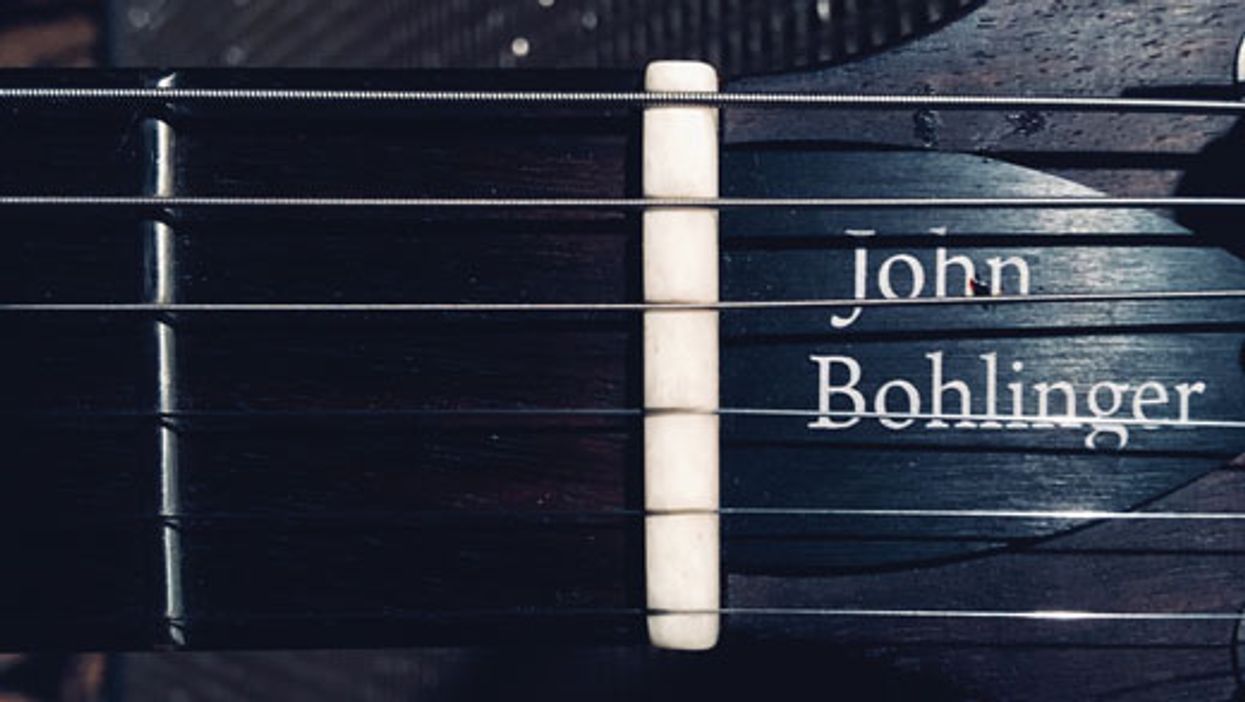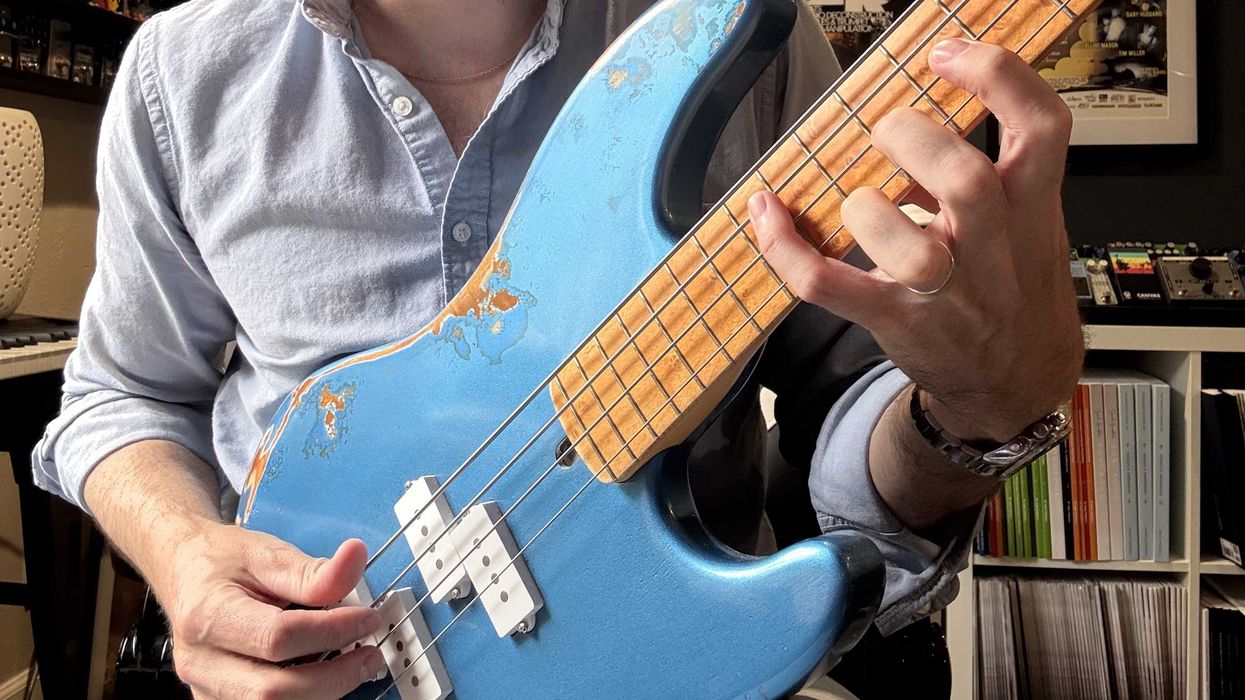Now that cursive writing is no longer part of the standard curriculum in U.S. schools, does that mean kids sign their names with block letters? How long until one's signature is a combination of emojis? I'm Unicorn Eggplant Heart-Eyed Cat. Nice to meet you…. I pity these kids.
There's something in us that wants to express who we are in an abstract manner: a distinctive signature that says, “this is me." Many of us spent hours of our youth filling pages of lined-notebook paper designing our own autograph, morphing classic cursive into a self-expression.
I'd bet that you, gentle reader, also spent time filling your notebooks with sketches of your ultimate guitar. Sure, we all have our favorite model, but designing your own gets beyond the general and into the specific details that define our sound, our aesthetic, and who we are.
Although guitar came into vogue in the '60s, thanks to the Beatles, the Stones, Zep, and guitar heroes like Jeff Beck, Clapton, and Hendrix, none of these artists had signature guitars during their peak, although they all had at least one highly specific instrument. Clapton had the Fool SG and Blackie, his Strat built from the best parts of three '50s-era Strats. Beck had his 1954 Les Paul, painted oxblood, routed for humbuckers, sporting a shaved neck. Page had his Dragon Tele and his No. 1: a '59 'burst modded with Grover tuners and a push-pull knob that split the bridge humbucker.
Strangely, the guitar companies ignored early rock-guitar gods and their mods. Fender didn't have any sigs until 1988, when they introduced Clapton and Yngwie Malmsteen Strats. Gibson and Gretsch started on this road in the '50s and '60s, turning a deaf ear to rock by launching sigs for Chet Atkins, Trini Lopez, Barney Kessel, and Tal Farlow. Rock was not part of the establishment; rock was DIY.
In the '70s, companies like DiMarzio, Mighty Mite, Seymour Duncan, StewMac, and others began offering guitar parts, allowing players to hot rod (or desecrate) their favorite axe or build one from pick-and-choose catalogues. The guitar Eddie Van Halen needed to make the music he imagined didn't exist, so he screwed together a Frankenstein out of parts he purchased and altered.
Van Halen changed the game. From then on, most serious players took pride in personalizing their guitars, finding just the right aftermarket pickups, bridges, tuners, and even necks that felt and sounded right to them. (This mod obsession of the '80s is why I often don't trust vintage guitars that are said to be totally stock. Pretty much anything that was played had some changes made.)
Today, signatures are so common that they come up in Rig Rundowns all the time. CGP Steve Wariner spent most of his Rig Rundown describing the design process for his new Gretsch Signature Nashville Gentleman. Wariner wanted a guitar that did everything he needed, so he agonized over every detail—pickups, bridge, nut, Bigsby, and finish—until every aspect of the guitar represented his sound.
In Andy Timmons' Rig Rundown, he revealed that he's played his 1994 prototype signature Ibanez AT10P so much that he's currently on his fifth set of frets. Similarly, Steve Morse has refretted his prototype Music Man eight times over the past 20 years. Santana and Mark Tremonti have rarely been seen playing anything but their PRS sigs since those guitars were released, because nothing sounds more like them than those instruments.
That's not always the case. There are guitarists who have signature models they never play. Kay made three guitars for Barney Kessel: the Pro, Artist, and Jazz Special. This was Kay's top-shelf offering. Kessel rewarded Kay's efforts by publicly saying, “I don't play that Kay—it's a terrible guitar!" You'd be hard pressed to find even a photo, much less a recording, of Kessel playing a Kay. Three years later, Kessel's career hit its apogee and he switched to Gibson, who pumped out the Regular and Custom Barney Kessel artist models for 13 years, from 1961 to 1974. Not only did Kessel never play his Gibson sig: In an act of baffling defiance, Kessel put black tape over the logo of his 1940s Gibson ES-350 that he played exclusively. More than likely, when artists don't play their sig it comes down to the guitar not doing what they want and/or the artist thinking they aren't getting the money they deserve.
A signature guitar should be a collaboration where the player's specific needs for tone and playability are advanced by a talented builder. That's how Guitardom moves forward. In 1952, the only contribution Les Paul made to his signature Gibson was the gold color. Les Paul hated the trapeze bridge and the low-angle neck pitch, which prohibited palm muting and jacked the intonation. But LP played the LP exclusively while tweaking the design with Ted McCarty. Together, they changed the Les Paul slightly every year, until they co-created one of the most iconic instruments ever.
They say that when artists dream, they dream of money. Don't get me wrong, I love money. But when I dream, I dream of guitars that make me sound like me, only better.
















